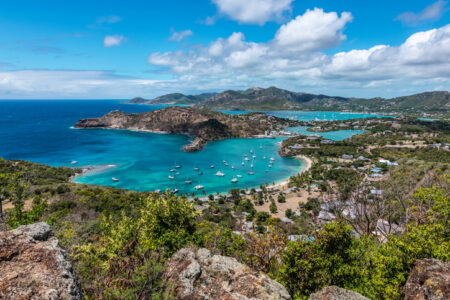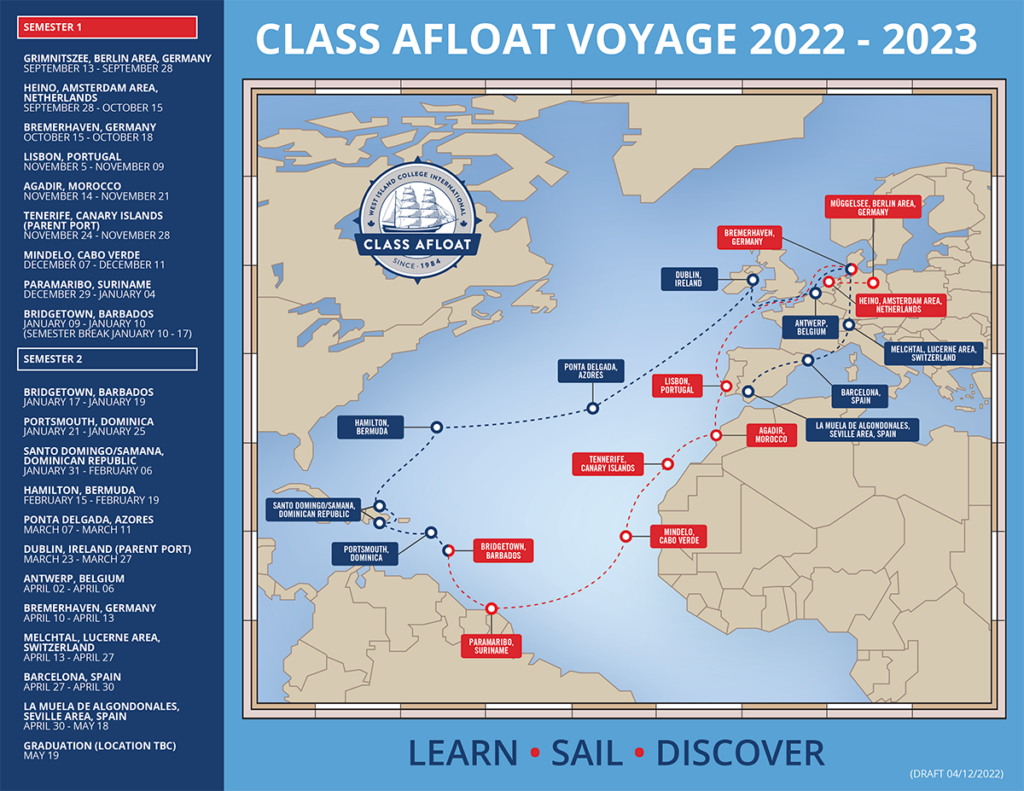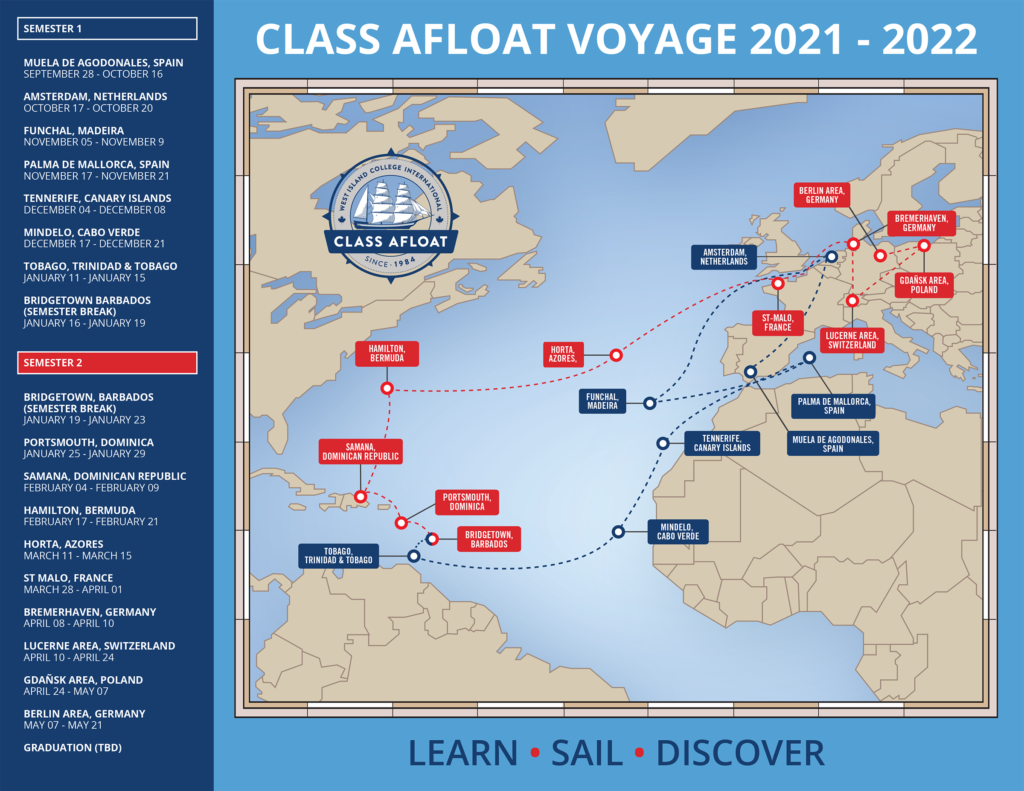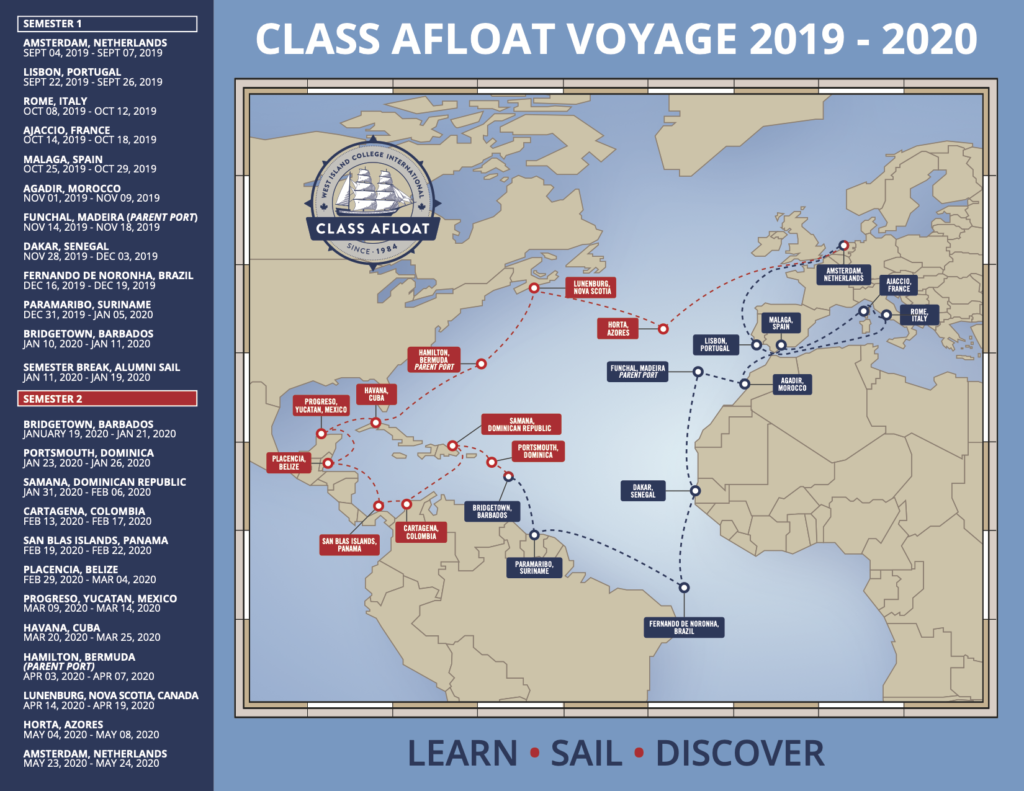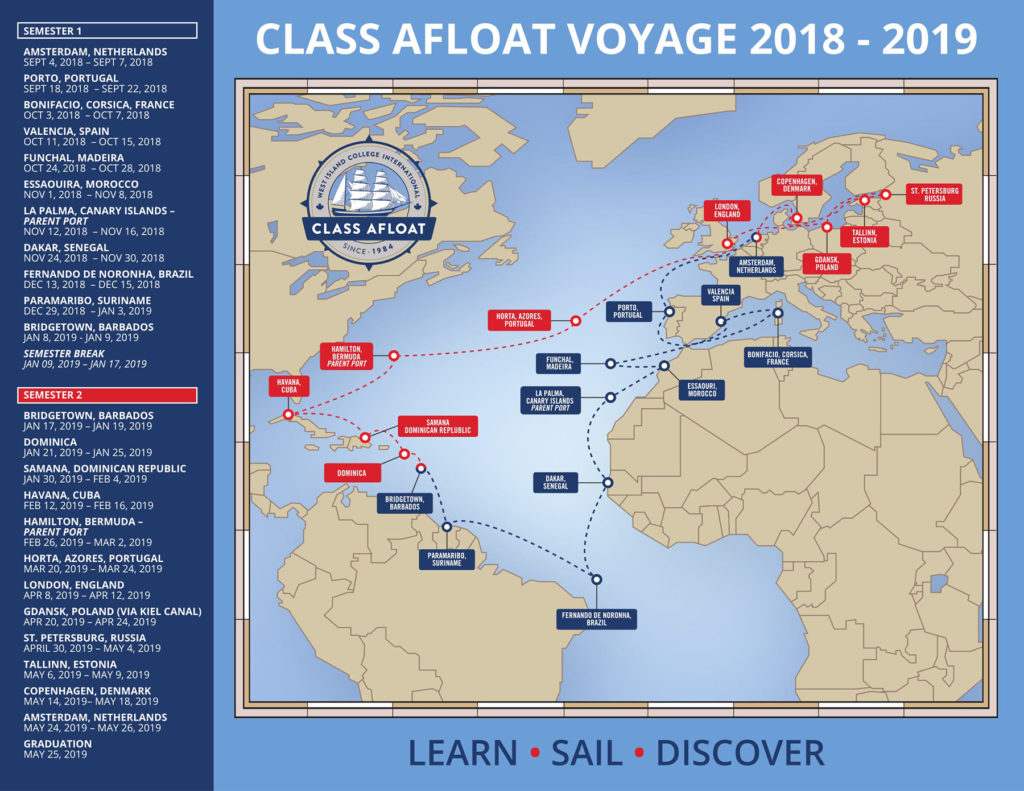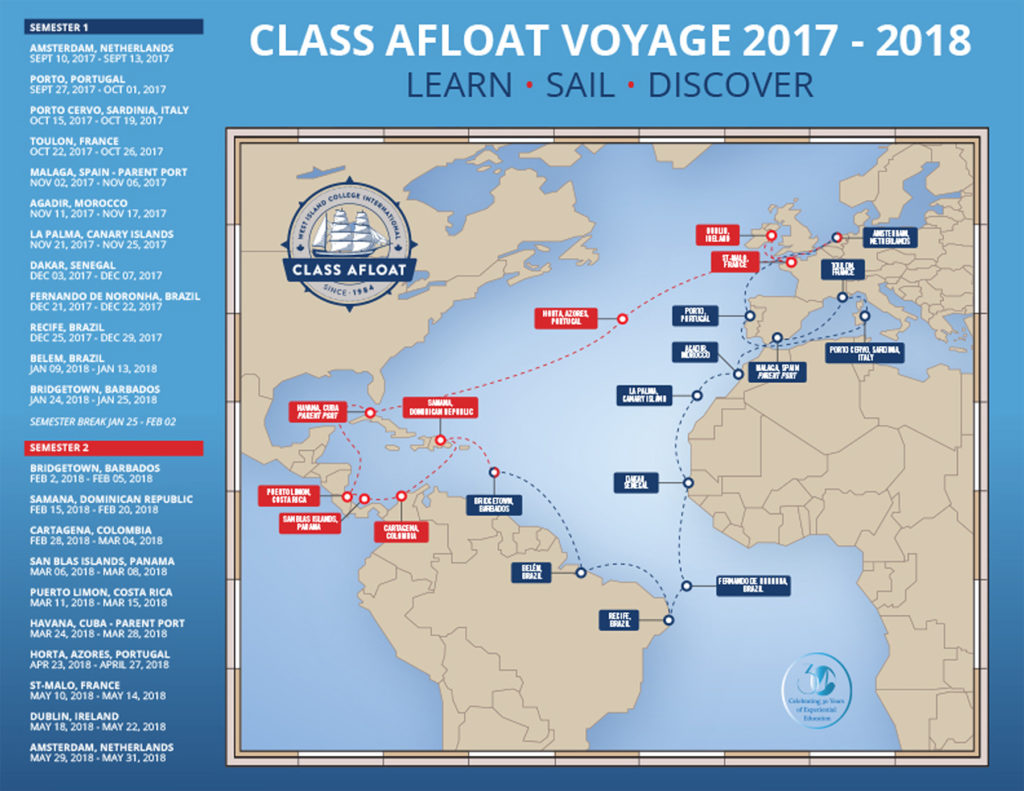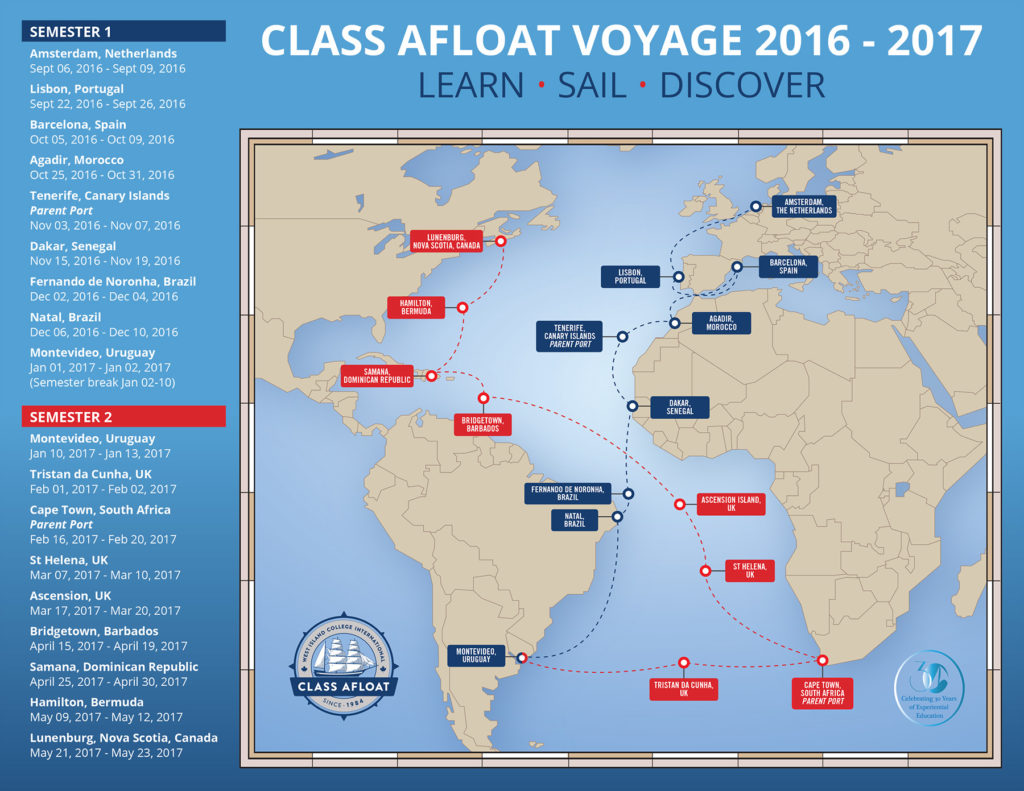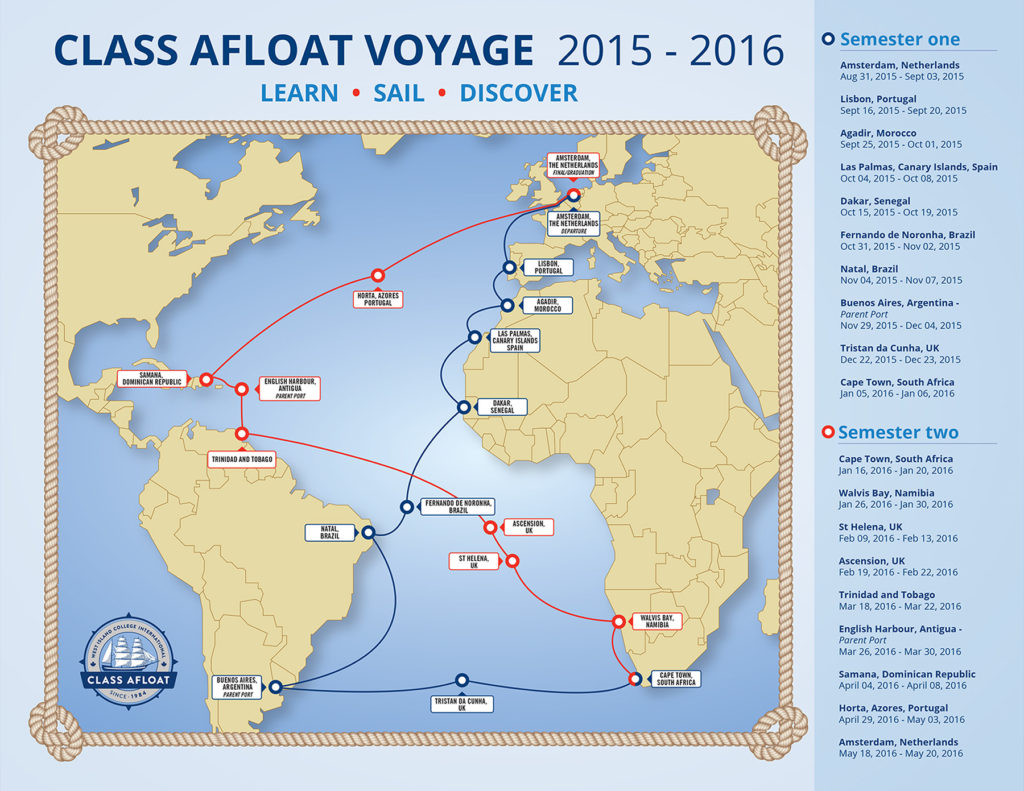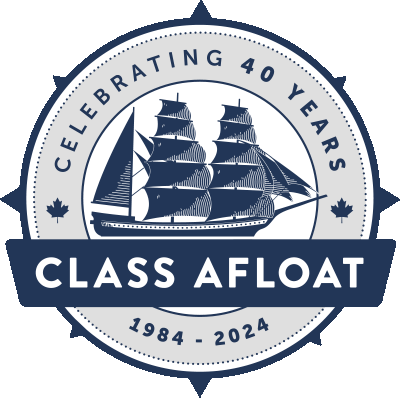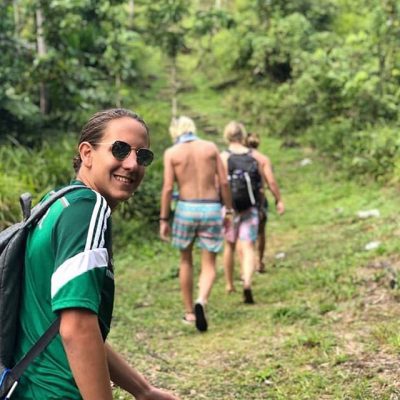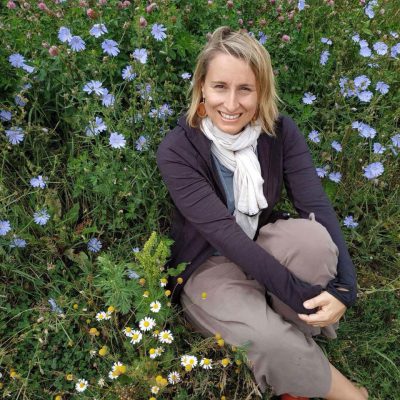Welcome to your school year with Class Afloat.
Each year, Class Afloat students visit up to 20 locations on land and at ports of call on 4 continents. Whether exploring on a land program in Europe, or sailing into ports, students participate in experiential programs, designed to showcase the country’s culture and history, while providing students with opportunities to explore the natural landscape.
From spending a night in the desert to exploring the colourful streets of Havana, students are given countless opportunities to further their learning, push personal boundaries and immerse themselves at each new port of call.
In addition to classes and organized port programs, students also have time reserved for independent travel and exploration. During shore leave, students are able to leave the ship in groups of 4, with the expectation of returning by curfew. Curfew will be different depending on the port.
Having ventured as far south as Cape Town, South Africa and as far east as St. Petersburg, Russia, each school year is different on board Class Afloat. While no two years are ever the same, our signature ports tend to appear year after year. These include Morocco, Fernando de Noronha (Brazil), Dominican Republic and Senegal.
Scroll down to explore our past and present itineraries.
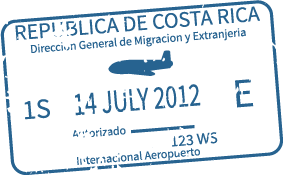

Semester 1
Semester 2
- Bridgetown, Barbados
- Portsmouth, Dominica
- Santo Domingo, Dominican Republic
- Samana, Dominican Republic
- Havana, Cuba
- Hamilton, Bermuda
- Ponta Delgada (Parent Port)
- Cherbourg, France
- Bremerhaven, Germany
- Melchtal, Switzerland
- Ardeche, France
- Barcelona, Spain
- La Muela De Algodonales, Seville Area, Spain
- Seville, Spain (Graduation)
Your 2025-2026 School Year Semester 1

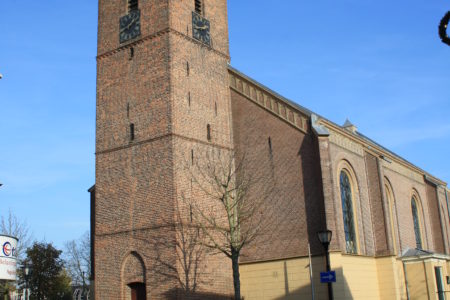
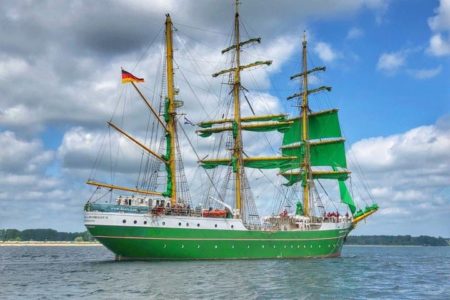
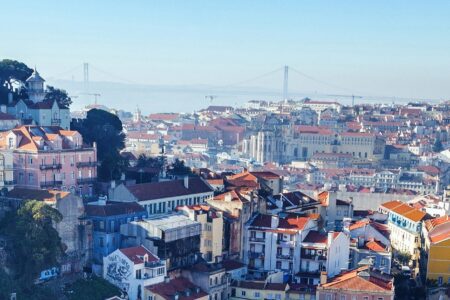
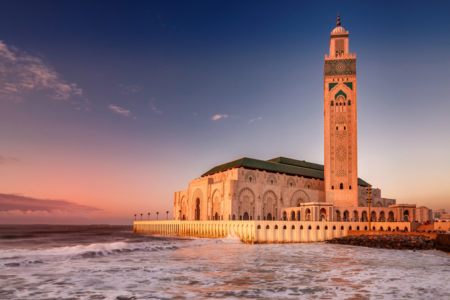
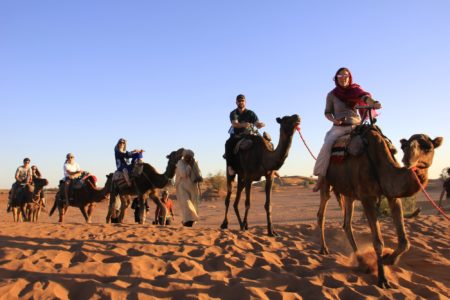
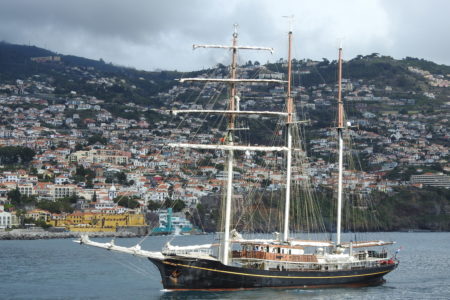
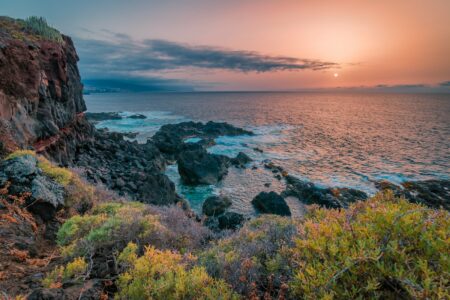
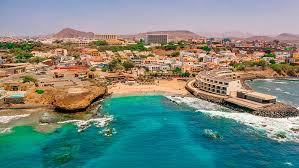


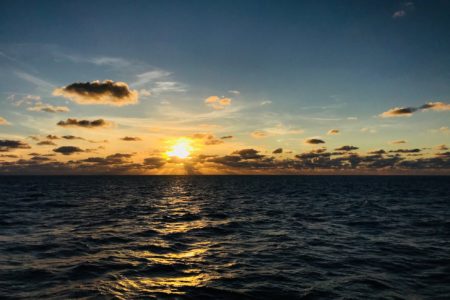
Your 2025-2026 School Year Semester 2

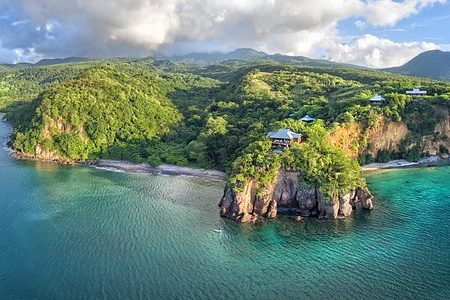
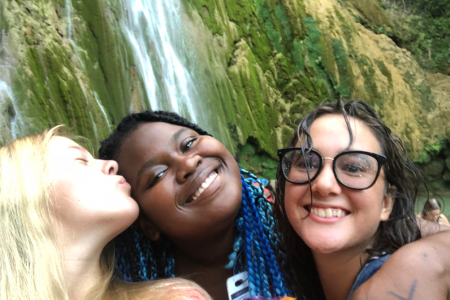
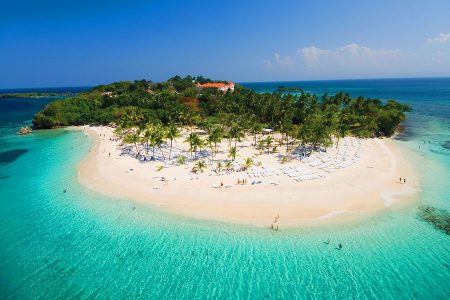
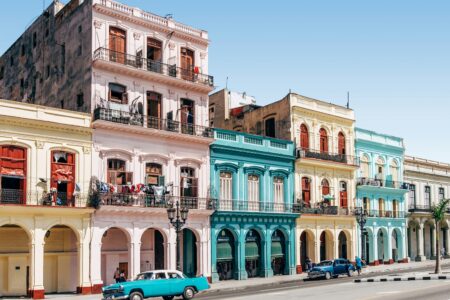
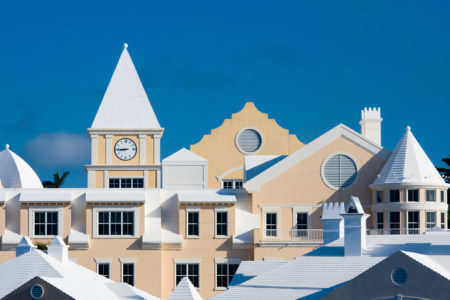
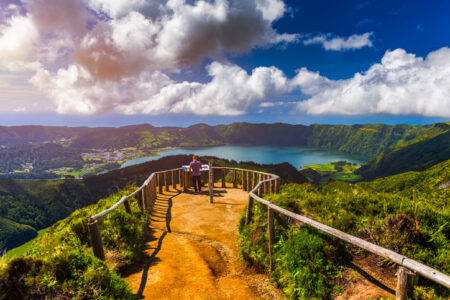
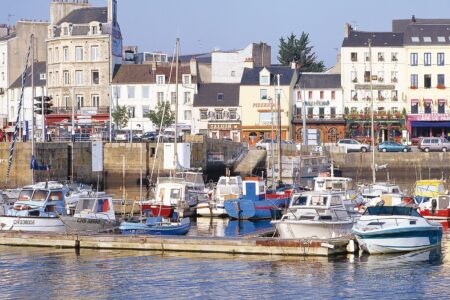
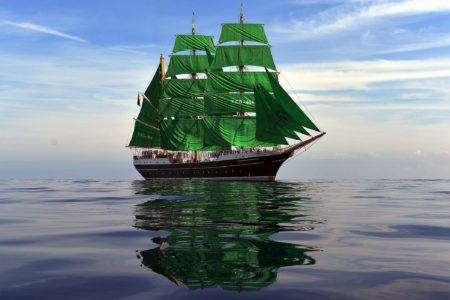
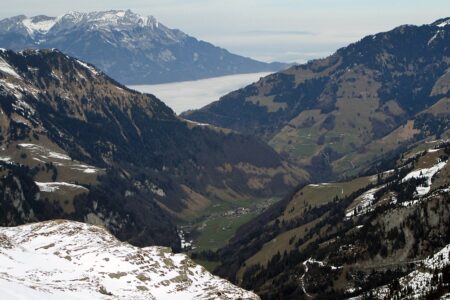

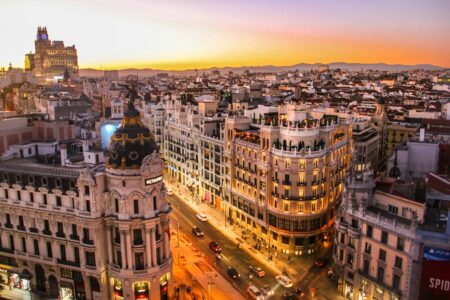
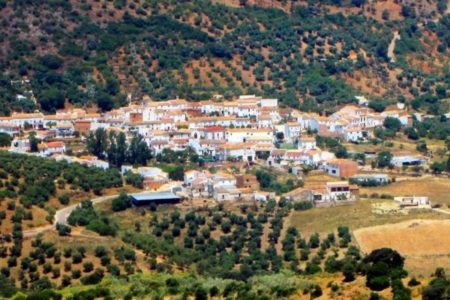
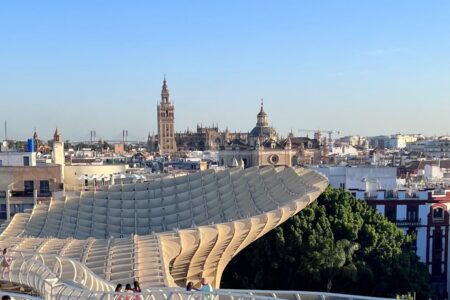
Semester 1
Your 2026-2027 School Year Semester 1
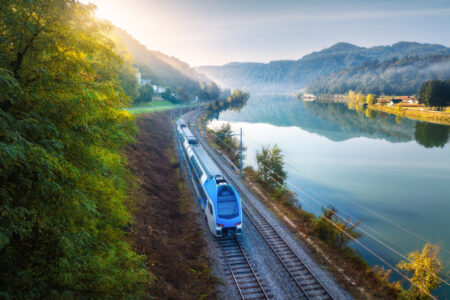
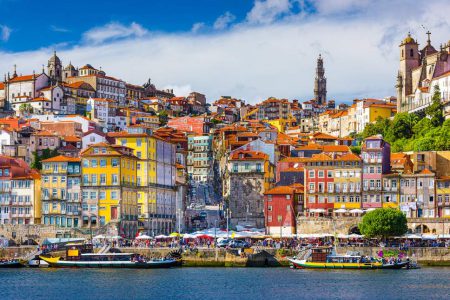
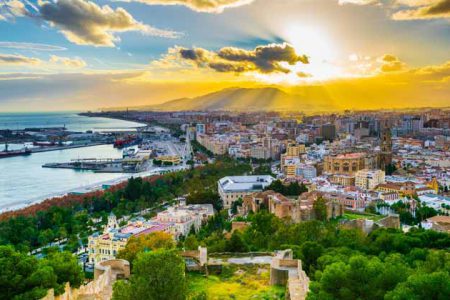

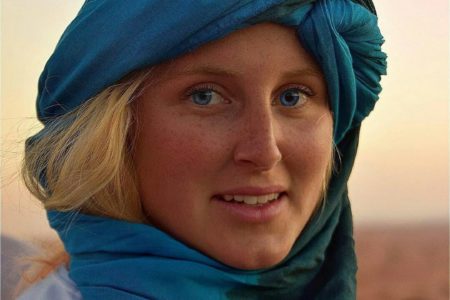




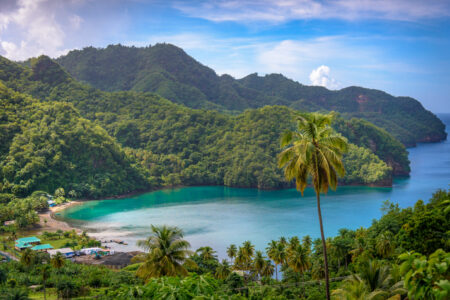

Your 2026-2027 School Year Semester 2


